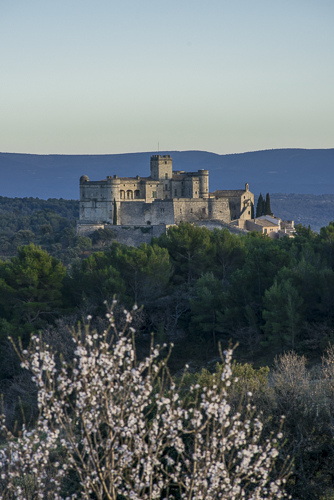Château d’Aulan: A Historic Medieval Castle in France
Visitor Information
Google Rating: 4.3
Popularity: Low
Google Maps: View on Google Maps
Official Website: chateau-aulan.fr
Country: France
Civilization: Unclassified
Remains: Military
History
The Château d’Aulan is located in the municipality of Aulan in France and was originally established by medieval European builders. Its origins trace back to the 12th century, when it was constructed atop an ancient fortified settlement, known as an oppidum, overlooking the Toulourenc valley. This elevated position provided a commanding view important for defense and communication.
Initially, the castle formed part of the barony of Mévouillon. In 1240, ownership changed hands when Raymond IV de Mévouillon sold the estate to Hugues du Puy-Montbrun. Subsequently, control passed through the Montbrun and then the Baux families. In 1293, the estate became part of the holdings of the Dauphin of Viennois, a regional ruler whose domain included parts of southeastern France.
In 1313, the Dauphin granted the estate as a fief to Rican de l’Espine, a knight who held peerage status within Dauphiné. The l’Espine family retained control for several centuries until their lineage ended in 1640. Prior to this, in 1635, the castle passed by marriage to the Suarez family. Over the course of the early modern period, the castle underwent various modifications that gradually diminished its military character, reflecting changing needs and technologies.
The French Revolution brought significant upheaval to Château d’Aulan, during which it suffered destruction, pillaging, and abandonment. After 1796, the property passed through inheritance to the Harouard de Suarez d’Aulan family. The castle endured further damage during World War I.
By the early 20th century, restoration efforts were initiated. Beginning in 1933, Charles Harouard de Suarez d’Aulan undertook rebuilding work on the château, encouraged by his cousin Jean Harouard de Suarez d’Aulan. These restorations helped preserve the site’s historical legacy.
The castle holds cultural importance beyond its physical presence, notably appearing in the writings of Jean Giono and René Char. Poet René Char associated the castle with the French Resistance during World War II. Additionally, a Gallo-Roman funerary inscription discovered in the castle courtyard inspired one of Char’s poems, linking the site to an even older stratum of regional history.
Remains
Château d’Aulan sits as a fortified complex originally designed for military purposes, featuring an arrangement of towers, turrets, a central courtyard, and an enclosing bailey or outer ward. This layout reflects medieval defensive architecture aimed at controlling the surrounding valley and allowing communication with nearby strongholds, including another Mévouillon castle located over a thousand meters higher on a neighboring rock.
The castle’s construction utilized local stone and traditional medieval building techniques, resulting in thick walls and formidable defensive structures. Over time, as the castle’s role shifted away from military defense, alterations softened its fortress-like features.
Today, the façades and roofs of the château are recognized as historic monuments, having been officially listed since May 1950, highlighting efforts to preserve their architectural integrity. Inside, visitors find a collection of notable artifacts, including a wooden statue known as the “Virgin of Pity.” This statue, dating from the 15th or 16th century and likely crafted in Catalonia, was obtained in 1933 near Perpignan and has been protected as a historic object since 2009.
Another significant element within the château’s courtyard is a Gallo-Roman funerary stone bearing an inscription. This ancient monument, embedded in the courtyard wall, connects the site to earlier historical periods, providing a visible testament to the region’s continuities from antiquity through the Middle Ages.
Photographic documentation preserves views of both the exterior and interior of Château d’Aulan, illustrating its evolution and restoration but no precise measurements or decorative details are recorded in the sources. The remains today stand as a composite site, reflecting centuries of construction, decay, and renewal.










